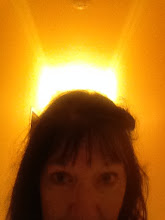Of course the task should not be beyond two old sea salts, says Dufresne.
Who are used to sewing, says Baudin.
They decide to pursue their plan further.
Dufresne collects several long strips of leathery sea grass.
Baudin selects two matching kelp-and-stalk combinations.
He places them, flat side to flat side, on the sand.
It's not easy to keep them together.
He takes them apart.
Dufresne returns with the sea grass.
No holes yet? asks Dufresne.
I'm about to begin, says Baudin. You do this one.
The holes must match exactly, says Dufresne.
Make them one claw's length apart, says Baudin.
All right, says Dufresne.
Dufresne makes two holes in one kelp with the point of a pincer.
Baudin makes two holes in the other.
Before we go any further, says Baudin, let us try to align them.
Good thinking, says Dufresne.
They draw the two kelp pieces closer.
A good match! Parfait!
They continue punching holes round the edges.
Now for the sewing.
Awkward again.
Luckily the stalks are flexible, so it is possible to place the kelps upright in the sand with the bent stalks either side, for balance, before aligning the holes.
NOW for the sewing.
They do it in shifts, as the task is laborious.
In out, in out. And a knot at the end.
Now to test it, says Baudin. Help me drag it down to the water.
Which way is up? asks Dufresne.
That's the beauty, says Baudin. It does not matter.
And if it does, that is good too, says Dufresne. He is thinking about ease of changing direction and so on.
Ha ha, yes, that is good too, says Baudin.
The kelp vessel floats as soon as the lower stalk clears the sand.
It takes off in a hurry.
Merde! cries Dufresne. We must catch it!
They strike out at once, to recover their vessel.

No comments:
Post a Comment